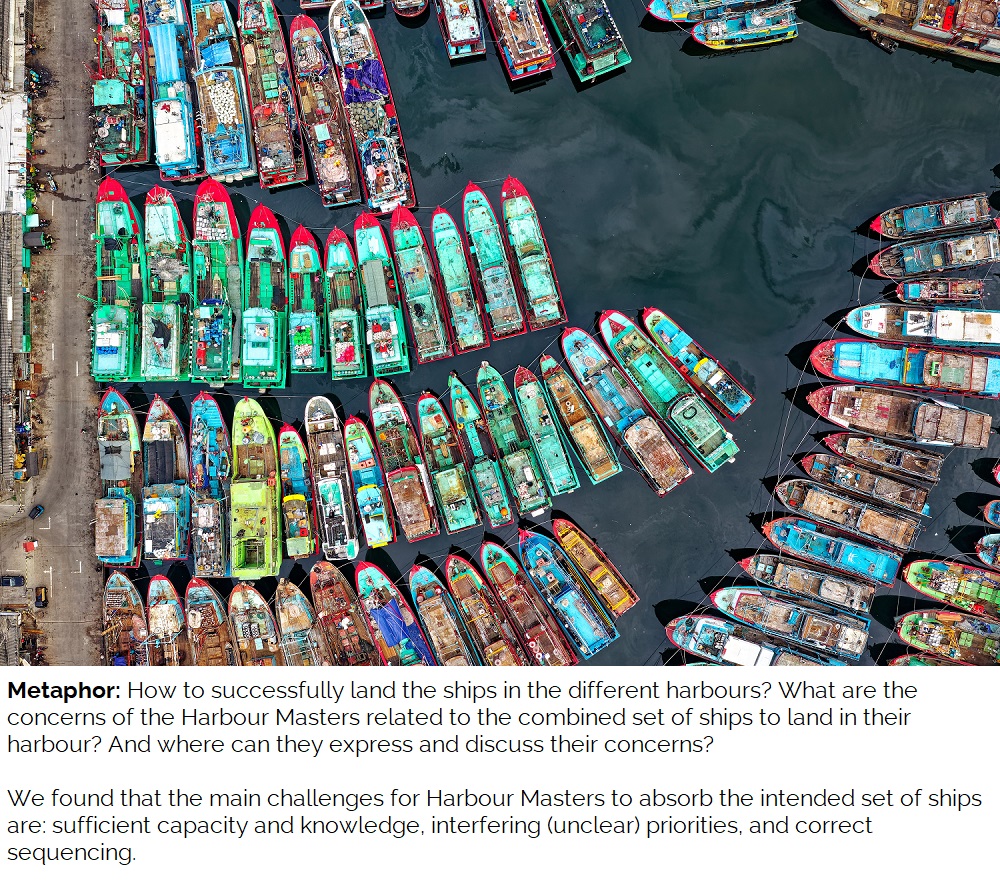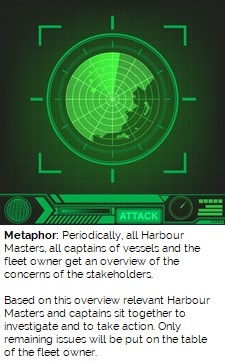How a ‘Change Risk Radar’ can help to embed change faster, better.
Large organisations nowadays, by definition, have a complex and large strategic change portfolio. The motto is: disrupt or be disrupted. Managerial focus of the individual change programs is usually primarily on delivering results, in time, within budgets. However, the real challenge appears to be lying in the capability of the operational entities to absorb the combined changes.

Failing to see and manage this ‘receiving perspective’, can eventually be a major cause for slowdown of the overall strategic transformation, especially when pressure on the organisation to deliver is disruptively high.
The instruments used to manage a strategic change portfolio – in old skool Prince II as well as in agile oriented methodologies – are mostly content, timeline and burn rate driven. They emphasise the delivery perspective and lack the view of absorbing capabilities. Due to the magnitude and complexity of the strategic portfolio, the information to senior management is biased via different management layers. As a result, transparency on board level regarding major concerns in strategy execution is limited, which makes it hard for the board to manage effectively.

To counterbalance this delivery pressure and create an environment where the absorbing dimension is also effectively managed, the solution lies in creating transparency on the main concerns of all individual stakeholders regarding the strategic execution.
With our concept of the ’Change Risk Radar’, a simple to use method to manage and accelerate strategic transformation is available. Essential in this approach is the focus on personal judgement of the key stakeholders (so-called owners). Transparency on concerns of these owners puts them in the centre of strategy execution, rather than abstract and anonymous risk- or progress reports.
This ‘Change Risk Radar’ approach essentially consists of three steps:
- Create an inventory of the main strategic change initiatives, their interdependencies ánd all operational entities impacted.
- Next, periodically capture and report on the main concerns of individual owners regarding change delivery and change absorption. Explicitly adding the managers of the receiving organisation as relevant owners is the differentiator; adding their concerns from the absorbing point of view.
- Based on the results of the strategic concern-inventory, a structured and regular dialogue on strategy execution is performed. Done in the right way, this dialogue will strengthen alignment in mind-set and focus between owners, improving agility in solution delivery, priority setting and resource optimisation.

The ‘Change Risk Radar’ surfaces potential misalignment between owners, since a periodical monitoring of the results of the dialogue creates transparency on miscommunication, lack of cooperation, behavioural weakness and/or counterproductive behaviour.
The effort to implement the ‘Change Risk Radar’ is limited, as well for implementation effort as for periodically running the Radar and facilitating the dialogue.
Implementation of this ‘Change Risk Radar’ shows that strategic change is realised faster and better, making disruption likelier than being disrupted, because of:
- Improved alignment on strategy execution, resulting from an owners dialogue;
- Improved transparency and reduced complexity in reporting on board level;
- Insight in the effective response to concerns and on (counter)productive behaviour.
Peter Koppenol, Partner at CPI Risk, Finance & Governance
Douwe Zeeman, Owner at Identity Plus





